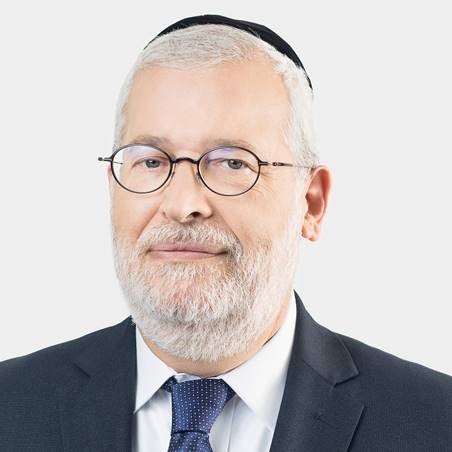Time to Rethink Meron

The difficult experience of Lag B’omer 5782 can perhaps be rectified on Lag B’omer 5783
More than anything, Lag B’omer of 5782 was a missed opportunity. A community in pain offered trust and the potential for change, but the authorities squandered their chance to make good on that trust.
Last year’s Meron tragedy, resulting in the deaths of 45 and grievous ongoing injuries of another two victims, generated a universal consensus among hundreds of thousands of people who visit the site each year: There was no choice but to recalculate.
To the casual observer, it may have seemed like a mere trifle to achieve that consensus. Surely something had to change, and surely everyone agreed. But anyone familiar with the sectors and the subsectors of the different communities involved in the yearly pilgrimage to Meron would have known that this consensus was an incredibly rare feat.
How exactly should Lag B’omer be run in Meron? Ask ten people, and you’ll get at least ten different suggestions. What was unique about this unusual consensus was the understanding that someone might actually know better, that there was value in allowing the authorities to make decisions and set policy.
True, Meron’s safety status had been neglected by the authorities for years. But last year’s tragedy, which cut down the lives of so many people, opened a rare window. The people were ready to put their trust in the authorities. No matter what, the authorities could not squander that trust. Not because the state needs the approval of this or that citizen to maintain safety at a site. It doesn’t need the approval of every random citizen to build what needs to be built, or to demolish what needs to be taken down. But it does need trust. And it received that trust.
In the big-picture view, that is what is so disappointing about the events of Lag B’omer 5782. Had this trust that was extended to the authorities resulted in the right outcome, there is no doubt that it could have fostered a more positive relationship between chareidi society and the authorities in the long term. It would not have been limited to Meron, and not only to 5782.
The early indications seemed positive. The various authorities that operate at the site were given more than 12 months (this being a leap year) to study the incident, analyze the causes, internalize their findings, and implement the necessary changes. As the date of the hilula approached, the chareidi community’s budding trust in the authorities grew.
Consider, for example, the early purchase of tickets. Tens of thousands of people, for whom the word “digital” is foreign — both culturally and morally — acceded to this strange (in their view) demand to purchase tickets only online, and coordinated their schedules to the limited timeframes allocated to them.
This system of limited tickets and limited timeframes was set in place after various authorities calibrated the figures of the number of visitors and how much time they usually spent on the mountain. They calculated safety standards and travel times and bus capacities.
But there was one question that was omitted from this advance planning. One question which, had it been asked, would have spared a lot of heartache, aggravation, and the allocation of needless resources.
That question is: Why do so many people come to Meron? What induces hundreds of thousands of men and women, the elderly and the children, to devote an entire day to such a long trip? Why do thousands of Jews travel from abroad every year to this remote mountaintop, and what makes those moments the spiritual highlight of their year?
This is not a logistical question. It’s a question of essence.
There is a well-known chassidic phrase that describes the atmosphere in Meron on Lag B’omer: “Outside it’s Simchas Torah and inside it’s Yom Kippur.” This pithy portrayal doesn’t only tell the story of the place — the tefillos in the tziyun and the dancing outside. It also encapsulates the motivation of the people who come to the mount.
They do not travel to Meron for a quick-fix express trip to kiss the tziyun, murmur a few words of prayer, and retreat. They are looking for a different kind of product. True, they saw the tragedy that struck last year. It’s hard to find a chareidi person unacquainted with one of the victims, or a first-degree relative of one of the victims. Those who make the trip up to Meron understood very well that after such a catastrophe, something had to change. And they had a year to digest the fact that things would be different.
Still, there could be no substitute for that special Meron formula of “outside it’s Simchas Torah and inside it’s Yom Kippur.” I would not be exaggerating were I to say that it would be easier to change the name “Meron” or its geographic location and to transport the public to a different place, than to alter the character of the hilula.
SO what happened? How did the authorities bungle their historic opportunity to harness a rare moment of trust?
In all honesty, the authorities never won the trust of the entire chareidi public. There were zealots who aimed to sabotage their efforts right from the start. Their actions were a chillul Hashem that we wholeheartedly condemn.
But there were also thousands of trusting people who came to Meron ready to follow the rules. They bought tickets, sat on the buses for hours, and then arrived in Meron and found that none of the people in charge cared about what was important to them. Violence and antagonism are not our way, and those who expressed their frustration and anger by physical means caused harm to the spirit of Lag B’omer, too. We would never condone or defend their actions.
But it remains the case that the vast majority who made the trip were initially willing to abide by the regulations. Why couldn’t the authorities show the same good will?
Apparently, the trauma of last year’s events hasn’t fully receded. Many of the decision-makers at the site are currently under investigation by the state commission of inquiry. When you operate in a state of trauma, fearful that every word, deed, or decision will be used against you, it’s impossible not to make mistakes.
But that doesn’t fully explain the debacle. So many of the trademark Meron elements that would have been even slightly reminiscent of the special atmosphere of the place were canceled this year. The authorities didn’t just regulate the crowd size and bus schedule. They diluted the spiritual impact of the event, and stripped the gathering of its soul.
Why? No one knows. Tens of thousands of docile people spent hours traveling by bus, and when they arrived, they found a site where outside it was like Tishah B’Av, and inside was an express conveyer belt — with the goal of getting people back home as soon as possible.
We at the Haredi Institute for Public Affairs see it as our mission to provide the government with the necessary knowledge and understanding of the chareidi community, so they can set policy and make decisions that will be appropriate and effective. Watching the events of last week was especially painful, because we know — from experience — that the process could have unfolded very differently.
Looking ahead to Lag B’omer 5783, the trust placed in the various authorities has been shattered. In order to pick up the pieces, the authorities must draft an expansive plan that meets the needs — and most important, is coordinated with representatives — of the various communities. Imposing a plan drafted by someone disconnected from and unfamiliar with the product sought by those making the trip to Meron will turn out to be another mistake. And it’s a mistake that is liable to cost human lives.
The difficult experience of Lag B’omer 5782 can perhaps be rectified on Lag B’omer 5783. Yes, it is possible to make the necessary changes to the site and to the event while maintaining that formula of Simchas Torah outside and Yom Kippur inside. But will Rabi Shimon’s hilula still hold the potential for a relationship that will lead us, as a society, to a better place? After this year’s breakdown, that will take a lot of trust. Some might even say a miracle.
The writer is the chairman of the Haredi Institute for Public Affairs and publisher of Mishpacha magazine.
(Originally featured in Mishpacha, Issue 912)
Oops! We could not locate your form.






